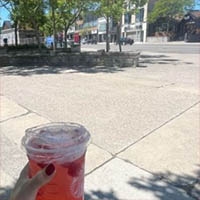The importance of creative flow on our mental health
 CREDIT: FSU PUBLICATIONS AND COMMUNICATIONS DEPARTMENT
CREDIT: FSU PUBLICATIONS AND COMMUNICATIONS DEPARTMENTThere is a saying: Comfort is the death of creativity.
Perhaps that’s the reason the entire planet seemed to simultaneously tap into their inner artist during one of the worst periods in recent history. COVID and creativity seemed to coexist and feed off each other. The pandemic almost strategically amplified the shortcomings of our society. This unnatural isolation forced us to confront dormant issues that had been swept under the carpet and forgotten. Our relationships and mental health were hanging by thread. Was it this uncomfortable prolonged isolation that had us all erupting with untapped creativity and rushing to put pen to paper, learn the guitar or start a DIY YouTube channel? Was it therapy?
Grammy-Award-winning music producer and coordinator of Fanshawe’s Music Industry Arts (MIA) program, Dan Brodbeck said that some of the greatest artists and some of the best music is made when someone is “not doing well.”
“I think a lot of true emotion comes out that way,” Brodbeck said. “I believe it can sometimes be like your therapist, because there’s times when you don’t necessarily need anything but an outlet, a distraction.”
We as humans consume some form of creative expression daily. We listen to music, watch a movie, or read a blog; it is vital to our identity and development. Creativity, it’s one word that encompasses: originality, pleasure, values, focus and imagination. It’s no wonder it can have such an impact on our well-being or lack of thereof.
Brooke Johnson, an Organizational Effectiveness Consultant here in London, Ont. and someone who also studied Fine Art at Guelph University believes that being creative daily in some way is akin to going to the gym.
“I need to move. It’s calming to turn on some music see how things come together…the final product is satisfying,” she said. “There is a process of putting on different layers that is energising and brings you joy. The days that I don’t get to do it, I don’t have as much energy.”
Society seems to be actively participating in understanding and tackling our mental health to improve our community, home and work life. Creativity no matter how you look at it is or at least should be at the center of that process. In a world where the cost of living is unattainable, society is at risk of disregarding paying attention to our own well-being. It’s a hefty price to pay.
“I’ve known some people that got into drawing, painting, playing instrument and they’re terrible,” Brodbeck said. “They just want to do it. That’s amazing because it gives them that outlet. I love cooking, I love building stuff. A lot of people that have ADHD, like myself, are like that, I just focus on it until I’m like, OK, I think I’m better. Now I’m gonna move on to something else. People need an outlet to do something that’s not normal to them every day. Being creative is natural to us as humans, it’s our curious creative thinking that has probably got us to where we are today. It cost nothing and belongs solely to you, so be curious. Create.”
















